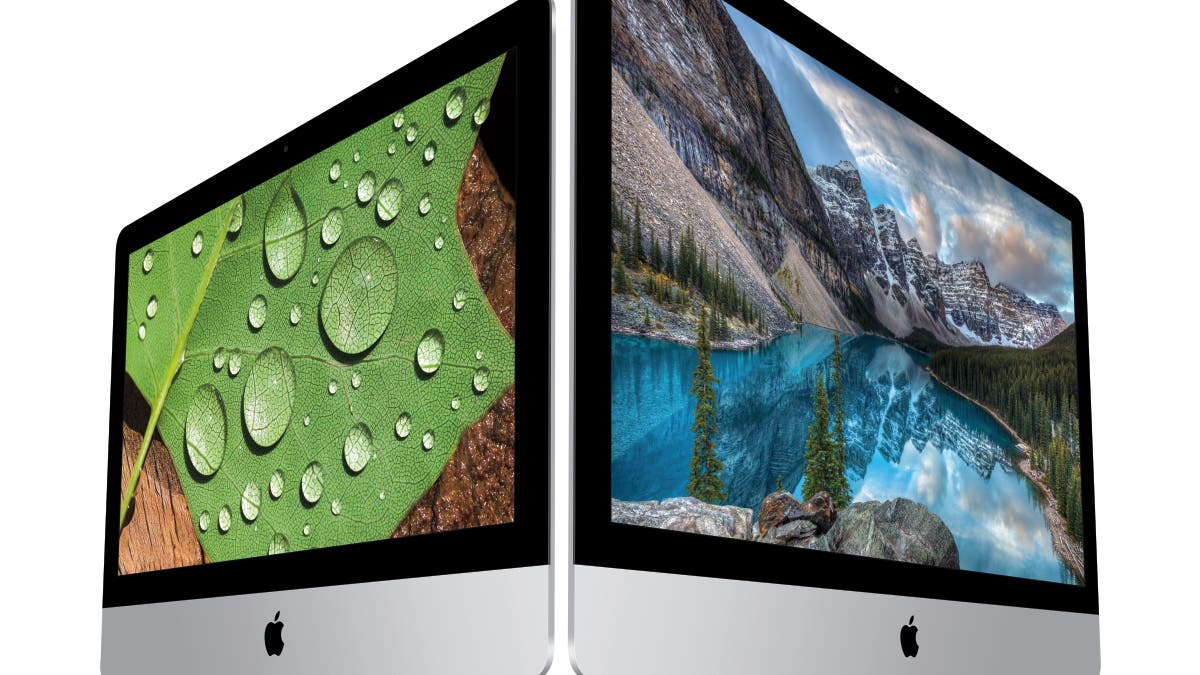
(Apple)
Apple has added another Retina iMac to its lineup – this time a lower-cost model, at least by Apple pricing standards.
Let’s get the bad news out of the way first. This is Apple so nothing is cheap. The new 21.5-inch iMac with Retina 4K display is $1,499. While that price is out of the reach of many consumers, it is $300 cheaper than the base 27-inch iMac with 5K Retina display, which starts at $1,799. That latter has been the only Retina iMac available to date.
Why Retina?
So, what does Retina mean on an iMac and why does it cost so much? Apple defines Retina as a display with a high enough pixel density (aka resolution) that you can’t see individual pixels with the naked eye. Or as Apple says in its ad copy: “text is so sharp, you’ll feel like you’re reading email and documents on a printed page.” Which, by the way, is true. If you’ve ever tried the 4K and 5K Retina iMacs (which I have) it really puts standard “high-resolution” desktop displays to shame. Without getting into a long explanation about the niceties of 4K and 5K displays, it boils down to the number of pixels. The 21.5-inch Mac has 9.4 million and the 27-inch has 14.7 million pixels. By comparison, the older 21.5-inch iMac has a display with about 2 million pixels and the older 27-inch iMac has approximately 3.7 million pixels.
Related: Apple-1 computer and rare Enigma Machine up for auction
And the price: It’s costly to manufacture large-format displays with really high pixel density and above-average color accuracy/detail (in the case of the new 21.5-inch Retina iMac, LG Display is making the screen for Apple). Dell, for example, also offers a 5K 27-inch display, which is priced at about $2,200 – and that’s the display only, sans the computer circuit board behind the screen as in the iMac. But there are cheaper 4K displays out there. Dell also offers a 24-inch 4K monitor for under $500.
And, finally, keep in mind that the pixel density on the iMacs is a lot higher than that new (pricey) 4K wide-screen TV you may have your eye on.
Better color
The Apple displays don’t just offer eye-popping resolution but better color. The new 4K iMac uses something called DCI-P3 technology, according to a look inside the display by iFixit. DCI-P3 is used by digital movie theaters to achieve a very wide gamut, or range of colors. Though rare today in consumer displays, Apple wants to be ready as digital still cameras and video cameras move beyond the standard gamut today, called sRGB. At the risk of wading into the weeds, Apple did this by using more advanced Light-Emitting Diode (LED) technology. The updated 5K iMac also offers this technology.
Hardware
The silicon and storage are underwhelming for the price. Apple elected to use Intel’s previous generation “Broadwell” processor instead of the just-released Skylake. And the storage is even more underwhelming. In fact, it’s downright primitive by today’s standards. In the base model, Apple uses a 1 terabyte 5400rpm hard drive. Hard drives that spin at 5400rpm have been around for eons and are, by today’s solid-state-drive standards, glacially slow at fetching data. That’s hard to swallow when you’re paying $1,500 for a premium desktop computer. Apple also offers a faster Fusion Drive that combines a solid-state drive with a traditional spinning disk but that’s a $100 upgrade and not offered on the $1,499 base model.
First-look verdict
The 4K display is stunning, very easy on the eyes, a boon to artists and professionals, and is where most displays will ultimately go. So, the display does make a big difference. But if you're going to shell out $1,500 (which, again, the average consumer may find hard to swallow) for the 4K iMac, you might as well spend the extra $100 on the Fusion Drive.
